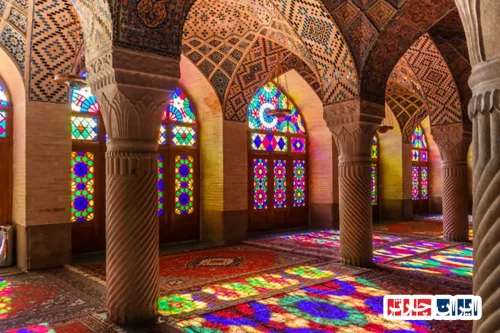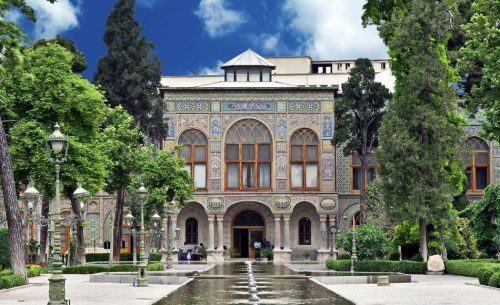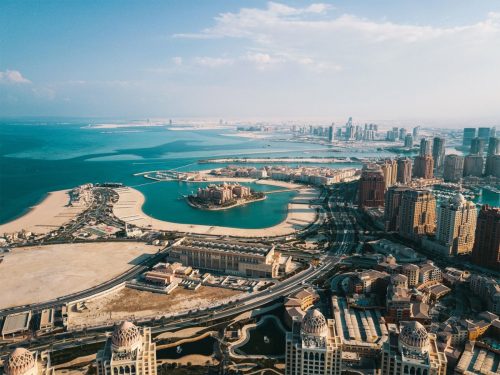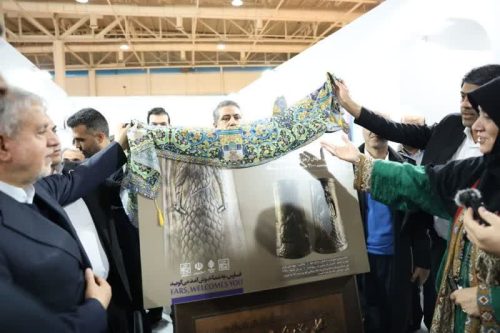Igniting Iran’s Legacy: How Tourism Sparks Cultural Diplomacy
In a world where cultural exchange and economic innovation are increasingly intertwined, the concept of “Igniting Iran’s Legacy: How Tourism Sparks Cultural Diplomacy” emerges as a powerful narrative that connects history, art, and modern progress. This unique approach emphasizes that tourism is not simply a means to travel and sightsee, but rather a dynamic channel for conveying the rich tapestry of Iran’s past while shaping a progressive diplomatic future. By exploring ancient landmarks, historical cities, and natural wonders, visitors experience firsthand how Iran’s legacy has served as a foundation for contemporary cultural dialogue and sustainable development.
sustainable tourism growth-Iran Charter
Tourism today plays a crucial role in enhancing cultural diplomacy by fostering mutual understanding and respect among nations. When travelers immerse themselves in the authentic traditions, customs, and storied history of Iran, they encounter not only striking architecture and art but also the values and spirit of a civilization that has influenced international culture for centuries. “Igniting Iran’s Legacy: How Tourism Sparks Cultural Diplomacy” encapsulates the idea that every journey into Iran is an opportunity to rebuild international bridges, promote dialogue, and showcase how a country can harmonize its past with modern aspirations. This narrative is interdisciplinary—melding the arts, heritage conservation, and economic strategy—to promote a globally appealing vision of sustainable tourism that benefits local communities and international relations alike.
Through strategic investments in tourism infrastructure and careful conservation of historical sites, Iran provides travelers with an immersive experience that highlights its cultural ingenuity. The balance between preserving ancient heritage and embracing innovative practices is at the heart of this approach. Visitors are encouraged to explore far beyond the stereotypical images often associated with travel; they discover vibrant local arts, culinary traditions passed down through generations, and a commitment to community development. Such experiences reinforce the belief that tourism can catalyze not only economic prosperity but also diplomatic goodwill across borders. The ethos embedded in “Igniting Iran’s Legacy: How Tourism Sparks Cultural Diplomacy” is one of reciprocal enrichment, where both the guest and the host benefit from the sharing of knowledge, customs, and future visions.
sustainable tourism growth-Iran Charter
Beyond its economic contributions, tourism in Iran stands as a testament to the transformative power of cultural diplomacy. Visitors leave with more than just memories of picturesque landscapes and historic monuments; they carry away insights into a society that values its heritage while actively engaging with the modern world. In this process, tourism becomes a dialogue—a conversation in which each tourist contributes to an ongoing narrative of resilience, creativity, and innovation. It is this dialogue that encourages policymakers, cultural institutions, and local communities to invest in initiatives that highlight Iran’s multifaceted identity. Consequently, “Igniting Iran’s Legacy: How Tourism Sparks Cultural Diplomacy” is not a static declaration but a living strategy, continuously enriched by evolving global perspectives and collaborative efforts. The infusion of new technologies in heritage management and the development of interactive visitor experiences further amplify the message, ensuring that the legacy of Iran remains vibrant and accessible to all.
sustainable tourism growth-Iran Charter
The far-reaching impact of this cultural-diplomatic approach is evident in the way it reshapes global perceptions. By spotlighting Iran’s artistic achievements, historical milestones, and commitment to sustainable development, the initiative inspires a reimagining of tourism as a tool for building trust and fostering international cooperation. The convergence of traditional values and forward-thinking initiatives illustrates that tourism can pave the way for social, cultural, and economic reform. Moreover, by embracing the philosophy behind “Igniting Iran’s Legacy: How Tourism Sparks Cultural Diplomacy,” communities and leaders alike are empowered to create environments where dialogue and diversity flourish. This integrative model demonstrates that when tourism is leveraged as a conduit for cultural expression and partnership, the result is a tapestry woven from centuries of wisdom, enriched with contemporary insights, and illuminated by a vision of peaceful global engagement.
In conclusion, the message behind “Igniting Iran’s Legacy: How Tourism Sparks Cultural Diplomacy” is one of hope, resilience, and shared destiny. It is a call to recognize that every journey taken within the borders of Iran is an immersive experience that nurtures both personal growth and international understanding. The strategic synergy of heritage conservation, economic innovation, and cultural dialogue ensures that tourism remains a cornerstone for sustainable development and diplomatic progress. As travelers continue to explore the rich legacy of Iran, they become ambassadors of a philosophy that elevates tourism beyond leisure—transforming it into an enduring dialogue about identity, creativity, and mutual respect. This vision not only celebrates the past but also lays the foundation for a future where cultural diplomacy and sustainable tourism are the twin pillars of global unity and advancement.
Investment in the Tourism Industry: A Catalyst for Economic Growth
The tourism industry has long served as a powerful economic engine by attracting both local and international investments. In today’s globally interconnected market, innovative tourism strategies nurture economic growth by creating new job opportunities, enhancing service infrastructures, and driving local developments. This dynamic sector not only celebrates a country’s rich cultural heritage but also reinforces the narrative of “Igniting Iran’s Legacy: How Tourism Sparks Cultural Diplomacy,” inspiring sustainable investments and robust economic progress. By carefully leveraging natural beauty and historical allure, this approach paves the way for long-term prosperity while fostering community-driven improvements that support broader socio-economic goals.
The Impact of Modern Technologies on Service Quality in the Tourism Industry
Modern technologies are reshaping the landscape of the tourism industry by revolutionizing service delivery and customer experience. Digital advancements—ranging from smart management systems to intuitive mobile applications—are enabling service providers to collect and analyze valuable customer data. This digital transformation enhances tailored service offerings, facilitates efficient booking processes, and ensures rapid customer support that aligns with global standards. In this environment, technology acts as a bridge to superior experiences, reinforcing the message that innovation is as integral to “Igniting Iran’s Legacy: How Tourism Sparks Cultural Diplomacy” as it is to advancing service quality across all aspects of tourism.
Cultural Diplomacy and Enhancing National Image Through Tourism
Tourism plays a vital role in cultural diplomacy by exposing international visitors to a nation’s deep-rooted traditions and vibrant contemporary art forms. Through curated travel experiences that highlight historical landmarks, local crafts, and authentic culinary delights, tourism fosters mutual understanding and respect among diverse cultures. Such endeavors not only celebrate a nation’s identity but also enable it to project a progressive image on the global stage. This strategic cultural exchange is central to the vision of “Igniting Iran’s Legacy: How Tourism Sparks Cultural Diplomacy,” where every visitor interaction becomes an opportunity to enhance national stature and build bridges between communities worldwide.
Innovation in Infrastructure: The Key to Advancing the Tourism Experience
Investment in state-of-the-art infrastructure is critical for elevating the overall experience of tourists and ensuring the long-term viability of the tourism sector. Modern amenities such as efficient transportation networks, smart lighting systems, and eco-friendly facilities transform basic travel into a seamless, high-quality journey. These developments not only facilitate easier access to historical sites and natural wonders but also reflect a commitment to sustainable urban planning. By integrating cutting-edge technology with traditional charm, nations can truly embody the principle of “Igniting Iran’s Legacy: How Tourism Sparks Cultural Diplomacy,” ensuring that heritage and progress travel hand in hand.
Creating Sustainable Employment Through Tourism Development
The growth of the tourism industry generates significant opportunities for sustainable employment, providing a platform for skill development and community empowerment. From guiding services to artisanal crafts and culinary arts, tourism opens diverse avenues for job creation that resonate with local expertise. Such engagements not only reduce overall unemployment rates but also stimulate local economies and enhance quality of life. When individuals become active participants in this vibrant sector, they contribute to a legacy of cultural exchange and economic renewal, echoing the transformative spirit inherent in “Igniting Iran’s Legacy: How Tourism Sparks Cultural Diplomacy.”
Strategies for Supporting Sustainable Investment in the Tourism Industry
Developing strategic frameworks that support sustainable investment is essential to maintaining a resilient tourism industry. Through streamlined policies, favorable financing conditions, and innovative incentive programs, stakeholders can ensure that tourism projects achieve long-term viability while respecting cultural and environmental values. These strategies not only attract investor confidence but also promote thorough planning and execution of projects. With a focus on responsible growth, the tourism sector can continue to drive economic development and cultural exchange—principles that lie at the heart of “Igniting Iran’s Legacy: How Tourism Sparks Cultural Diplomacy.”
The Role of Financing and Intersectoral Collaboration in Expanding Tourism
Robust financing mechanisms and close collaboration among various sectors are pivotal in catalyzing the expansion of the tourism industry. Financial institutions, public agencies, and private enterprises working in unison create a supportive ecosystem that nurtures innovative tourism projects. Such partnerships facilitate the pooling of resources, expertise, and market insights, which are instrumental in launching and sustaining high-caliber tourism initiatives. This collaborative approach ensures that investment flows smoothly, enabling the seamless integration of cultural heritage with modern development and further advancing the overarching goal of “Igniting Iran’s Legacy: How Tourism Sparks Cultural Diplomacy.”
Preserving Natural and Cultural Resources: The Cornerstone of a Resilient Tourism Sector
Amid rapid modernization, preserving natural landscapes and cultural treasures remains an indispensable commitment. As tourism grows, dedicated efforts to safeguard environmental and historical assets become pivotal in maintaining the unique appeal of a region. Conservation initiatives—supported by stringent regulations and active local participation—ensure that natural scenery and cultural landmarks continue to inspire awe in every visitor. This protective stance not only honors the past but also enriches the current tourism experience, echoing the enduring message of “Igniting Iran’s Legacy: How Tourism Sparks Cultural Diplomacy” by reaffirming the intrinsic value of heritage.
The Future Outlook of Tourism and Iran Charter’s Role in Cultural Transformation
Looking ahead, the future of tourism is intertwined with forward-thinking strategies that embrace both technological innovation and cultural preservation. As emerging trends align with shifting global expectations, institutions like Iran Charter are leading the charge in fostering environments where heritage and progress coalesce. By promoting practices that enhance visitor experiences while nurturing cultural dialogue, Iran Charter plays a pivotal role in shaping a sustainable and inclusive tourism ecosystem. This visionary approach not only secures economic and cultural benefits for today but also sets the stage for enduring international cooperation, mirroring the spirit and ambition of “Igniting Iran’s Legacy: How Tourism Sparks Cultural Diplomacy.”
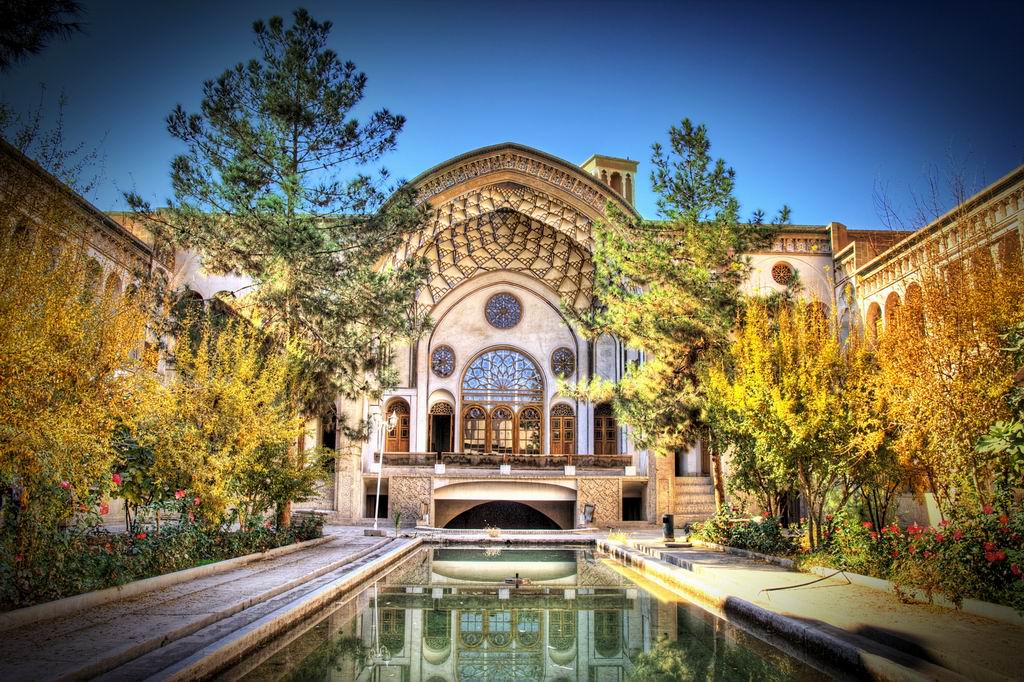
Frequently Asked Questions
- How does the tourism industry contribute to cultural diplomacy?
- The tourism industry introduces Iran’s cultural and historical attractions to the international community, thereby enhancing cultural diplomacy.
- What measures are taken to create employment in the tourism sector?
- Through developing tourism infrastructure, providing financial support, and encouraging investments, sustainable employment opportunities are created.
- How can Iran improve its position in the tourism industry?
- By enhancing service quality, better promoting local attractions, and fostering strategic partnerships with investors, Iran’s position in the tourism industry can be significantly improved.
- What is the role of the Coastal Council in developing a maritime-based economy?
- The Coastal Council formulates supportive policies and coordinates between different sectors to optimize marine resource utilization and boost economic opportunities.
- What incentives are available for investing in tourism?
- Investors in the tourism sector benefit from credit facilities, tax exemptions, and simplified licensing procedures.
- What challenges does the tourism industry face?
- Challenges include a lack of institutional coordination, insufficient infrastructure, and various logistical difficulties that need to be addressed.
- How can traditional crafts be integrated with tourism?
- By organizing joint events, cultural exhibitions, and incorporating local crafts into the overall tourism experience, a synergy between these sectors can be achieved.
- Why is sustainable investment critical in tourism?
- Sustainable investments generate long-term employment, preserve the environment, and promote local culture, all of which are essential for the growth of the tourism industry.
- What role does the Ministry of Cultural Heritage play in supporting tourism?
- The Ministry safeguards historical and cultural sites while implementing initiatives that elevate the tourism experience, thus laying a solid foundation for industry growth.
- How is sustainable employment established in the tourism sector?
- Sustainable employment is achieved through specialized workforce training, improved service quality, and the creation of diverse job opportunities along the tourism value chain.
- How does increased investment in tourism impact the country’s economy?
- Boosting investment in tourism stimulates related businesses, increases cash flow, and improves economic indicators, contributing significantly to national economic growth.
- What measures help simplify the investment conditions in tourism?
- Streamlining regulatory procedures, simplifying licensing processes, and offering financial incentives are effective measures to facilitate tourism investments.
- Why does Iran rank fifth in global tourism?
- Despite having abundant attractions, there is still room to improve marketing strategies and service quality, which keeps Iran from achieving a top-tier ranking.
- What opportunities exist for growth in the tourism sector?
- The expansion of infrastructure, incorporation of modern technologies, and enhanced inter-institutional cooperation present significant growth opportunities.
- How does job creation in tourism aid cultural diplomacy?
- Creating job opportunities in tourism broadens cultural exchanges and improves the global perception of Iranian culture, underpinning effective cultural diplomacy.
- What initiatives does the government undertake to support tourism?
- The government supports tourism by providing financial incentives, implementing favorable legal frameworks, and launching projects that ensure sustainable growth and job creation.


